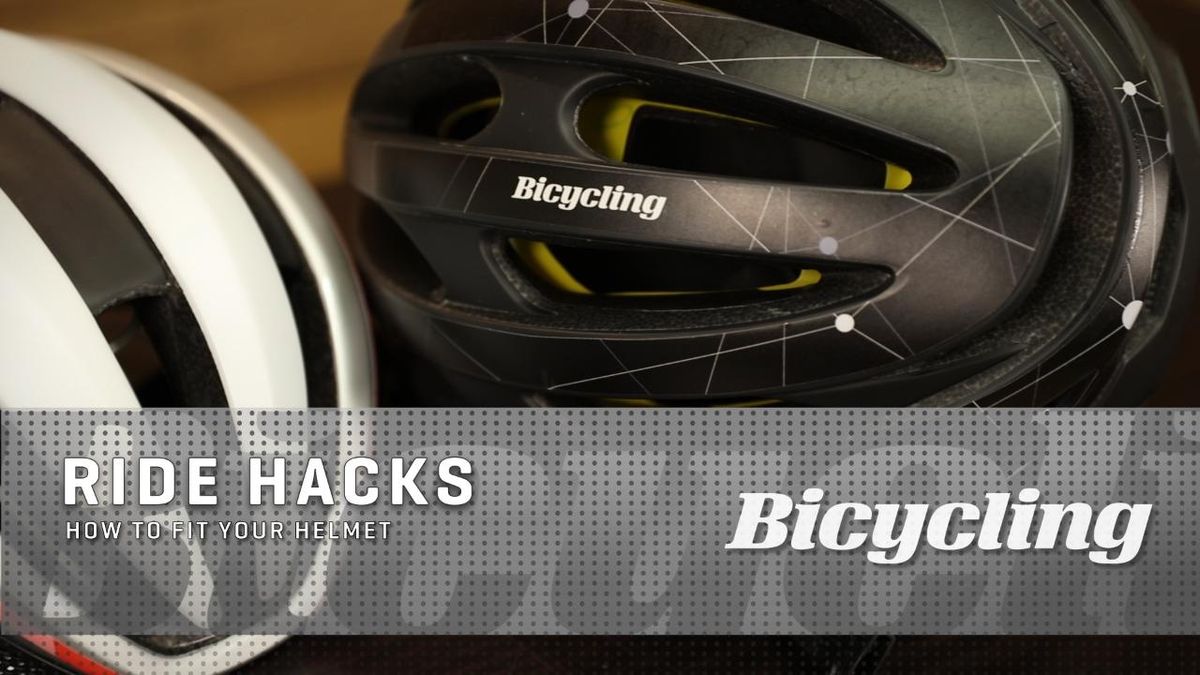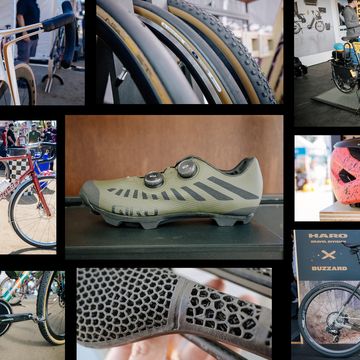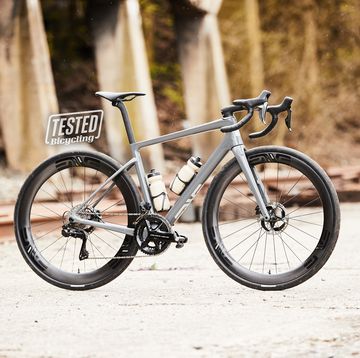Go to your local bike shop, and you’ll see helmets prices from $40 to $300 plus. Swing by Walmart or Dicks, or browse on Amazon, and you’ll find bike helmets for as little as $9. Some are heavier and some lighter, some more bulbous or streamlined. We enlisted Dennis Leedom of Bern, Eric Colton of Specialized, and Oscar Huss of POC to tell us the difference between a budget helmet and a higher priced lid.
RELATED: Ten Road Bike Helmets We Know You'll Love
Helmets Under $100
At the lowest price point, your helmet will have an expanded polystyrene (EPS) liner that is fully or partially covered with a hard plastic shell or moderately flexible plastic shell. EPS, which is in almost all helmets, looks like the same stuff a grocery store cooler is made of. At the lowest price points, it’s glued, taped or molded to its shell. The EPS will typically be thick because it doesn’t have internal structure, so it will have enough EPS to absorb the impact of a crash according to CPSC standards (the U.S. standard for bike helmet safety). At this price, chances are the helmet is one-size-fits-all, with simple straps to fasten it under your chin.
Learn how to properly fit your bike helmet:
For a few more dollars--the $50-$70 range, you get protection, with more style and comfort. The helmet may have an internal harness to fine tune fit, even if it’s a simple one.
But simple construction means limited venting, which requires engineering to incorporate into an EPS liner.
“Once you get in the $40-$70 range,” says Leedom, Founder and CEO of Bern Helmets, “we’re making sure all of your materials meet spec, we’re giving you more protection than you’d get at rock bottom prices, and the helmet will look nice. We spend a lot of time engineering the shape of the helmet and giving it a nice looking paint job that will last.”
Most helmets under $70 won’t be specific to a biking discipline, like road or mountain. In this category, typically helmets are do-it-all. We like Bern’s street-styled Berkeley/Brentwood ($70 on Competitive Cyclist) helmets, which are made from liquid foam with a hard shell. The women’s is lower profile, softer, rounder and smoother. The men’s has harder lines. Both have a visor for style and comfort.
“A balance of protection, style and comfort… that’s what the customer wants before they know they want it,” says Leedom. “And you can get it affordably from some brands.”
Helmets Between $70 and $150
In the middle price range, helmets become more specific to a rider category, like road, Mountain Bike, BMX and commuter, according to Colton, Helmet Category Manager at Specialized. “You might get a visor on a mountain bike helmet, a sleek, more aerodynamic shape for road helmets,” he says. “You also get specific sizing that’s more tunable to each rider’s unique head shape.”
In the middle price range, helmet harnesses are executed better with more focus on what the user group wants. As they go up in price, helmets have a wider range of adjustability--a harness that lets you tweak fit up and down as well as forward backwards, with less moving parts so there are fewer things to break.
Also as you go up in price, straps and other parts in contact with your skin become softer and more flexible, while still being able to withstand the force of a crash. “The best brands are ticking all the boxes,” says Colton. Their helmets will be “light, comfortable, [and have a] good fit.”
According to Colton, below $70, most of a helmet’s structure is from how much EPS you use. As you enter the middle range price category, EPS is made from liquid, rather than compressed beads. And brands also start to use fiber-reinforced plastic internal structures so that they can carve more vents without losing the structural integrity of the EPS.
“You get better weight-to-strength ratio,” says Leedom, adding that the in this price range the helmet’s engineers can give you better-fitting protection with a less material. “A helmet needs to fit your head—if there’s lots of space, it won’t be comfortable and it won’t protect you.”
We likeSpecialized’s Proparo 3 ($110), a light, sleek and well-ventilated performance helmet with great fit, lots of adjustability, and superb ventilation it its class. “It’s a great combination of performance and value,” says Colton. “It borrows technology from the Prevail--one of Specialized’s premium helmets--but brings it to affordable price point.”
RELATED: Prepare for Old-School Helmet Nostalgia with the Bern FL-1 MIPS
Helmets That Cost More Than $180
“Premium brands are spending a lot of money on research and development, safety and aerodynamics, and investing in innovation” says Huss, who heads helmets at POC. As prices go up, “brands are using best materials they can find for liner, shells, straps, buckles, and harnesses— as well as accessories, like cases, to protect the helmet and make it fast and well ventilated.” They’re also investing in the sport they serve, sponsoring riders, teams and events worldwide that many of us enjoy watching. “We want to make sure that it’s not just technology that’s progressing, but the sport as well,” says Huss. “So part of what you’re investing in with a high price helmet is the bike culture we all know and love.”
The highest end helmets strive to be the thinnest, lightest and most aerodynamic they can be, but cutting or shaving material out of a block of EPS tends to weaken it. So high-end helmets utilize the highest grade of EPS available, and brands invest a lot of time and money into engineering. Most companies also use Aramid reinforcements their premium products to keep optimize weight and strength between vents without increasing volume.
The EPS shaping tool is complicated—but it lets designers and engineers carve precision angles in vent holes to evacuate and accept airflow without slowing you down. A high-end helmet’s aerodynamics are usually wind tunnel tested, which is expensive unless you have your own, like Specialized.
RELATED: The Specialized S-Works Prevail II Is a Race-Ready Dream Helmet
In high end helmets, companies are also trying to figure out how to make helmets safer. “We’re pushing the testing standards,” says Huss, “and we’re using our own testing standards.” For example, many high end road helmets now use MIPS to help diffuse rotational forces in the case of a crash. Some also now have more back of the head coverage inspired by mountain bike helmet design.
“There are a lot of different ways to describe a safe product,” agrees Colton. “There are lots of additional non–required standards to test to for sporting activities— but for products that we think warrant additional levels of testing, we do it.”
When it comes to premium road helmets, POC’s OctalX ($260 on Amazon) is one of our favorites. It has more rear coverage and aramid bridges in the EPS, which makes it one of the thinnest, lightest, best ventilated helmets available. It als has a Recco tracker to help search and rescue locate a distressed rider.
RELATED: The Octal X Is POC's Newest XC Offering
The Care and Keeping of Your Helmet
All our experts strongly stress, helmets don’t do any good unless they’re on your head. “Helmets only work if you wear them,” says Leedom.” Getting a helmet on a rider’s head is half the battle.”
“We want people to feel comfortable so that they wear their helmet,” says Colton.
And, you should replace your helmet at least every five years, according to Huss, and sooner if you have a crash. EPS is designed to absorb a single hit only. Extreme heat and lots of sun will also make your helmet age faster.













